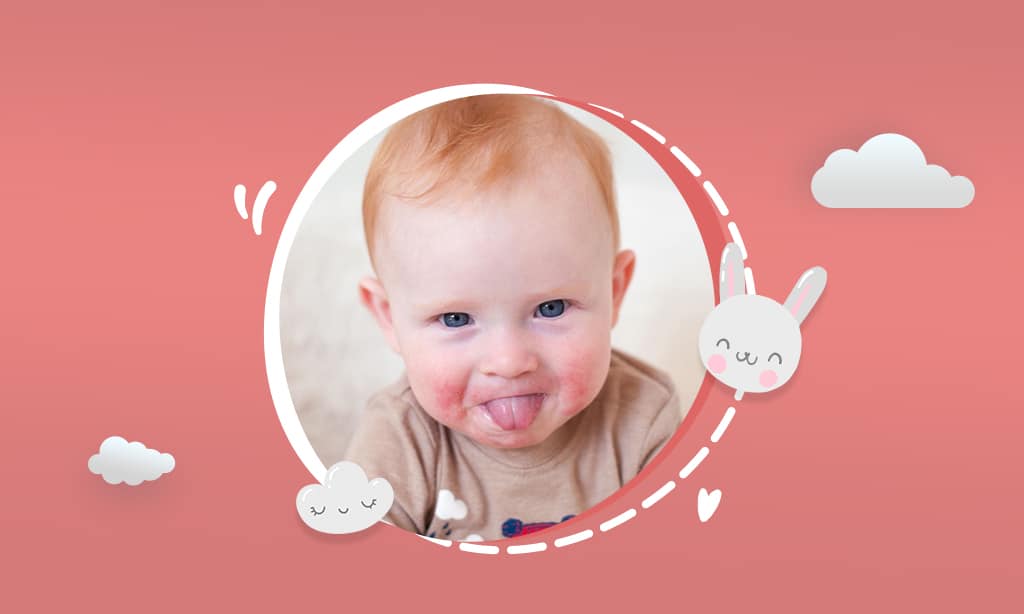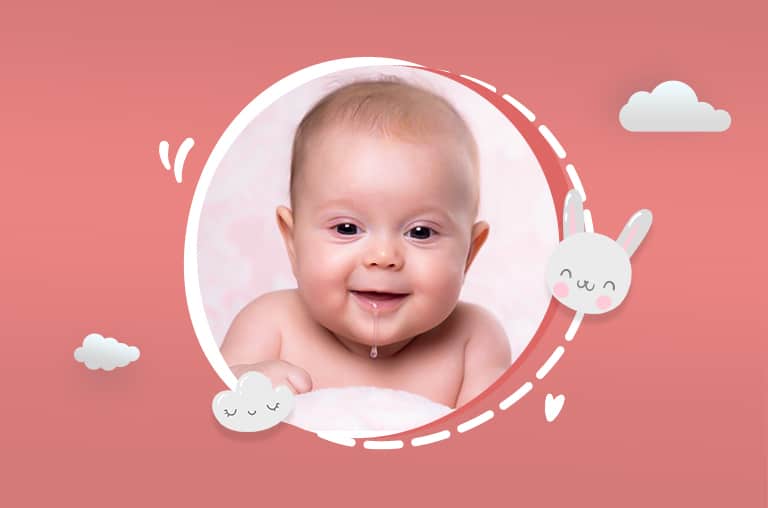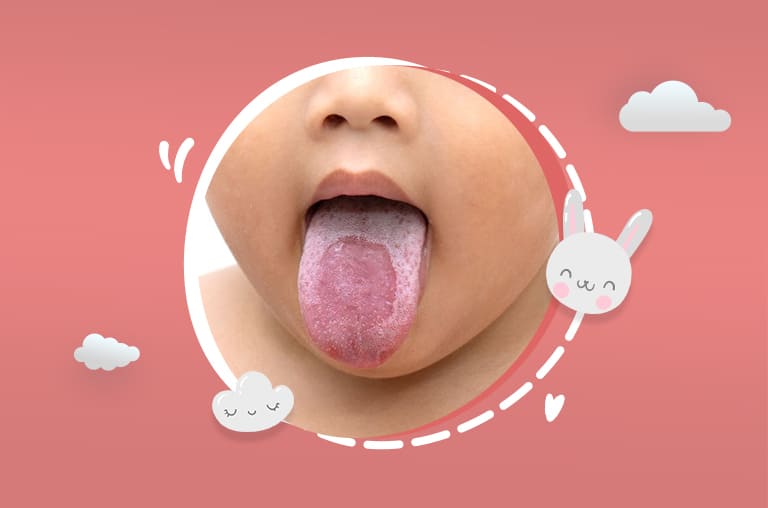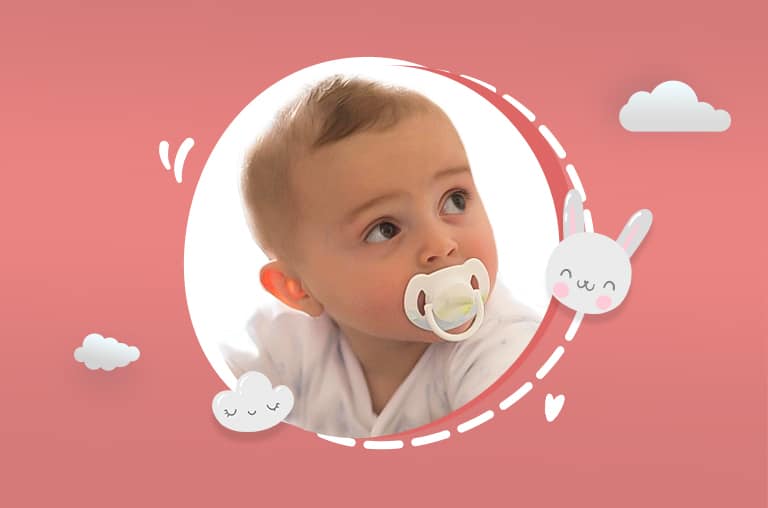Understanding And Treating Drool Rash: Tips For Parents
No more rashes. Keep your baby smiling forever!
On Mar 22, 2024 – 7 minutes read

While it may seem adorable to witness a baby drooling, this endearing sight can sometimes lead to discomfort for infants. Excessive saliva can result in irritating rashes and dry, chapped skin. As caregivers, it’s essential to be aware of basic remedies to alleviate drool rash and preventive measures to keep it at bay. Additionally, despite the cuteness, searching for drool rash pictures online highlights the importance of understanding and addressing this common issue for babies.
Keep reading for natural remedies for drool rash and learn how to prevent them.
What Is Drool Rash?
Excessive drooling in babies can occur for various reasons, with teething being a common trigger. When saliva accumulates on the baby’s skin surfaces, such as around the mouth and in the folds of the neck, it can lead to irritation, resulting in red, itchy rashes, as well as chapped and bumpy skin. It’s important to distinguish between drool rash and hand, foot, and mouth disease, as both can cause similar symptoms but have different causes and treatments.

There are several reasons why this occurs, with teething being a common trigger. It can also occur when a baby starts using a pacifier. When the skin remains wet due to saliva for an extended period, it can lead to irritation. A baby’s skin is delicate and sensitive, and prolonged exposure to saliva can increase sensitivity, resulting in various skin irritations such as contact dermatitis, eczema, and rash.
Although it is not typically complicated, it can be uncomfortable, itchy, and irritating for the baby. However, there’s no need to worry about your baby’s health, as here you will learn everything you need to know to treat or, even better, prevent drool rashes altogether. Explore effective drool rash treatment options to ensure your baby’s comfort and well-being.
How To Get Rid Of Drool Rash Completely?
Drool rash, often experienced by babies, is typically mild and harmless, and you can effectively treat it with simple steps. Begin by gently wiping the affected areas of the drool rash baby with warm, clean water twice a day. When cleaning the baby, opt for gentle, fragrance-free cleansers to avoid triggering symptoms with harsh chemicals. After bathing, ensure the affected area is thoroughly dried, and consider applying a barrier cream like Aquaphor or petroleum jelly to soothe the skin and create a protective barrier against saliva.
Additionally, if excessive drooling occurs during teething, provide the baby with chilled teething toys or rings to chew on, which can help reduce saliva production.
Following these steps can alleviate symptoms and improve the baby’s comfort. However, if symptoms persist for more than a week, it’s advisable to consult a pediatrician for further evaluation.
Natural Remedies for Drool Rash
Babies start to drool, mostly when they turn 5 months old, or when it starts teething. This continues up until the baby turns just about 18 months. Simple, natural home remedies can help to get rid of the red, dry rashes, without worrying about the side effects.
Many natural solutions are readily available at the home that will help you with skin rash.

Aloe vera gel
One effective drool rash home remedy is natural aloe vera gel. Cleanse the baby with warm water or a clean, sanitized washcloth. Extract the natural gel and apply it to your baby’s affected areas. Repeat this process twice a day for quick relief.
Coconut oil
It can also be used either directly or mixed with other essential oils to get rid of drool rashes. These act as a barrier and reduce friction when the affected area gets rubbed against the pillow or any clothes the baby is wearing.
Natural cocoa butter
It can also be used instead, as it also works as well as coconut oil and natural aloe vera gel.
We recommend that you don’t put on any clothes on the baby till the rash dries out or is treated, as it may worsen the symptoms. You can also give the baby chewy vegetables or toys to reduce the amount of saliva dripping out of the mouth. Some mothers follow the practice of applying breastmilk to the affected area. This is because breastmilk has moisturizing and hydrating properties, which may help prevent further spread of the rashes.
Is Drool Rash Another Yeast Infection?
It is a very common type of yeast infection. Yeasts are a type of fungus that co-exist with bacteria and all the other living cells in our body. Yeasts are present in all of our bodies and often cause different kinds of infections. But adult bodies contain antibodies in the form of good bacteria that help us fight the infection-causing fungus. But the immune system in an infant’s body will not be fully developed. This will allow the yeasts to cause oral rash, drool rash, diaper rash, etc. on the baby’s skin.

Yeast thrives in damp and moist areas of our bodies, making the skin around the mouth or in the folds of the neck susceptible to infection due to the presence of saliva.
Drool rash caused by a yeast infection in a baby may manifest as red rashes, raised patchy chapped skin, and tiny bumps around the mouth and on the neck. It’s important to differentiate between drool rash and eczema, as they can present similar symptoms but have different causes and treatments.
Yeast infections can be treated with anti-fungal ointments or any of the natural remedies mentioned earlier. These infections are often mild and typically do not require consulting a doctor.
How Long Does a Drool Rash Last?
It starts in a baby for different reasons like teething when a baby starts to use a pacifier, and so on. Drool rash is never infectious and usually doesn’t cause any serious complications. But it is our responsibility to take care of our baby and prevent the yeast infection from causing drool rash.

You have a variety of natural treatments at your disposal to address the cause and eliminate your baby’s rash. In most cases, consulting a doctor may not even be necessary. By following preventive measures closely, you can effectively ward off drool rash. Given its common occurrence, your baby may experience it too. Utilizing an emollient, barrier cream, or healing ointment can provide quick relief. Additionally, natural remedies like coconut oil or cocoa butter may prove beneficial. If you’re looking for the best cream for drool rash, consider options like Aquaphor or petroleum jelly. With consistent use of these remedies, you may notice the symptoms of drool rash diminishing within a week. However, if symptoms persist, it’s advisable to seek guidance from a pediatrician.
Drooling may persist for a period of time, but typically diminishes by the time the baby reaches 18-20 months of age. As excess saliva dripping ceases, the likelihood of yeast infection decreases significantly, reducing the need for drool rash cream.
FAQ
Breastmilk contains moisturizing properties and mothers swear by the use of it for all kinds of baby rashes. So there is nothing wrong with trying breastmilk for treating the rashes. But if the rash stays for more than a week, consult a doctor.
Aquaphor is known as the healing cream which is very helpful for treating all kinds of skin allergies in babies. Therefore you can use Aquaphor to get rid of drool rash.
You may use Vaseline as a barrier cream to help reduce the friction between the baby’s skin and any surface. Therefore, it can reverse the symptoms of drool rash.
Yes, like any other infection, drool rash is itchy too. Even in adults, yeast infections can be very itchy. Similarly, drool rash can be itchy as well.
Drool rash can spread on the baby’s skin, but it can never be infectious. It can spread from the mouth area to the folds of the neck.
Final Verdict
No baby has to go through the pain and discomfort caused by drool rashes. It can be very itchy, and painful, and give a burning sensation. You should always be alert and not allow the baby’s skin around the mouth or the neck, usually where it will be moist most of the time because of drooling, to be wet for a long time. Always wipe the baby’s body with a clean washcloth or sanitized baby wipes. If your baby gets infected by yeast, look out for any symptoms, and get rid of the rashes as soon as possible.
Natural remedies and moisturizers help the baby in many ways. You can even use some of them regularly, as it helps reduce the tension between the baby’s sensitive skin and any other surface that rubs against the baby’s body. It can also help in preventing the symptoms of drool rash. If the rashes continue to stay and spread on the skin, you must speak to your baby’s pediatrician as soon as possible.

Subscribe to Newsletter
Elevate your routine, stay on trend, and embrace a personalized beauty journey with our curated insights.





Write a Comment